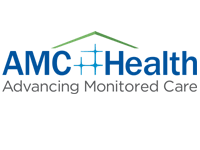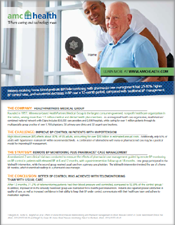Resource:
HealthPartners Medical Group: Improving BP Control in Patients with Hypertension
This case study outlines the methods by which HealthPartners Medical Group improved BP control in Patients with Hypertension, through remote monitoring plus pharmacist case management.
Patients receiving home blood pressure (BP) telemonitoring with pharmacist case management had 25-30% higher BP control rates, and substantial decreases in BP over a 12-month period, compared with traditional BP management.
THE COMPANY:
HEALTHPARTNERS MEDICAL GROUP
Founded in 1957, Minnesota-based HealthPartners Medical Group is the largest consumer-governed, nonprofit health care organization in the nation, serving more than 1.5 million medical and dental health plan members. As an integrated health care organization, HealthPartners’ combined national network with Cigna includes 850,000 care providers and 6,000 hospitals, while caring for over 1 million patients through its multispecialty group practice of over 1,700 physicians, 50 primary care clinics and 22 urgent care locations.
THE CHALLENGE:
IMPROVE BP CONTROL IN PATIENTS WITH HYPERTENSION
High blood pressure (BP) affects about 30% of US adults, accounting for over $50 billion in estimated annual costs. Additionally, only 50% of adults with hypertension maintain BP within recommended levels. A combination of telemedicine with nurse or pharmacist-led care may be a practical model for improving BP management.
THE STRATEGY:
REMOTE BP MONITORING PLUS PHARMACIST CASE MANAGEMENT
A randomized 2-arm clinical trial was conducted to measure the effects of pharmacist case management guided by remote BP monitoring on BP control in patients with elevated BP at 6 and 12 months, with a post-intervention follow-up at 18 months. One group participated in the telehealth intervention, while the second group received usual care from a primary care physician. The telehealth intervention involved the use of a home BP monitor, which transmitted readings to a pharmacist case manager.
THE CONCLUSION:
BETTER BP CONTROL WAS ACHIEVED WITH TELEMONITORING THAN WITH USUAL CARE
After 12 months, 71.2% of telemonitoring patients had their blood pressure well controlled, compared to 52.8% of the control group.1 In addition, improved BP in the remotely monitored group was maintained for 6 months post-intervention. Patients also reported greater satisfaction in quality of care, as well as increased confidence in their ability to keep their BP under control, communicate with their health care team and adhere to medication regimens.
1 Margolis KL, Asche SE, Bergdall AR, et al. Effects of Home Blood Pressure Telemonitoring and Pharmacist Management on Blood Pressure Control: A Cluster Randomized Clinical Trial. JAMA. 2013;310(1):46-56 and Magid DJ, Green BB. Home Blood Pressure Monitoring: Take It to the Bank. JAMA. 2013;310(1):40-41.

